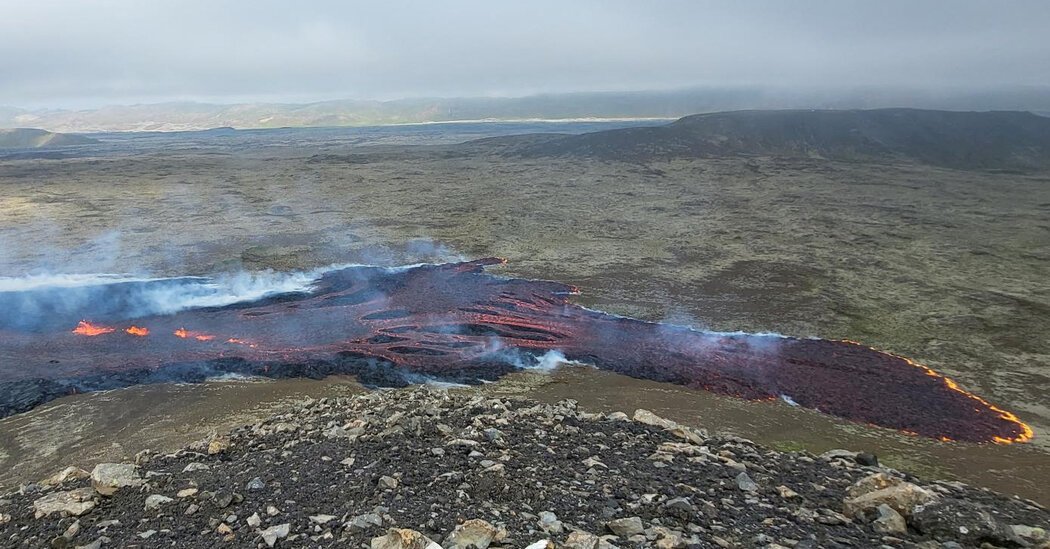A minor volcanic eruption began on Monday afternoon in an uninhabited area on Iceland’s Reykjanes Peninsula, the country’s weather officials said.
The eruption, which began at 4:40 p.m. U.T.C., was described as small and posing “no immediate risks to communities or infrastructure,” the Icelandic Met Office said.
It is in a zone that rests between the Fagradalsfjall and Keilir volcanic mountains, roughly 20 miles from the country’s coastal capital, Reykjavik, the office said.
Lava was emerging as “a series of fountains” and flowing south from a fissure on the slope of a hill called Litli Hrútur, officials said. Toxic gas and steam emissions from the fissure were drifting to the northwest, according to officials.
“There are no disruptions to flights to and from Iceland and international flight corridors remain open,” Iceland’s foreign affairs ministry said in a statement.
The public was warned to stay away from the eruption as officials continue to assess its development in the coming days.
Situated on the Mid-Atlantic Ridge, the sparsely populated island nation, home to 370,000 people, has a large quantity of volcanic features. Major eruptions have caused havoc far beyond Iceland in the past.
In 2010, ashes from a volcanic eruption there shrouded much of Europe’s skies, causing a major disruption of air travel over much of the continent. And in 1783, an eight-month-long eruption of a volcanic fissure sent haze as far away as Syria and triggered a famine.
Scientists at the Icelandic Met Office had warned of a potential eruption as the area became a hotbed of seismic activity over the past week. Officials reported thousands of earthquakes in the region, with some reaching magnitudes of 4 and 5. Iceland has now seen eruptions on the Reykjanes Peninsula three years in a row.
Earthquake activity also preceded eruptions in 2021 and 2022, officials said. Last year, three tourists were injured when they tried to hike near the site of the eruption to catch a glimpse of the lava.
Volcanic activity in the Reykjanes Peninsula had been “pretty quiet for hundreds of years before these eruptions started,” according to Egill Hauksson, a research professor of geophysics at Caltech who has studied Icelandic seismic activity.
“So this may be a new cycle of activity that may continue for decades,” he added.
Officials said the fissure in this eruption was roughly one kilometer long.
It was unclear Monday if the eruption was expected to grow or how long it would last. They often peak after the first few days, Mr. Hauksson said.
The eruption last year fizzled out after about three weeks. But another eruption that began in March 2021 dragged on for months, according to the United States Geological Survey.





